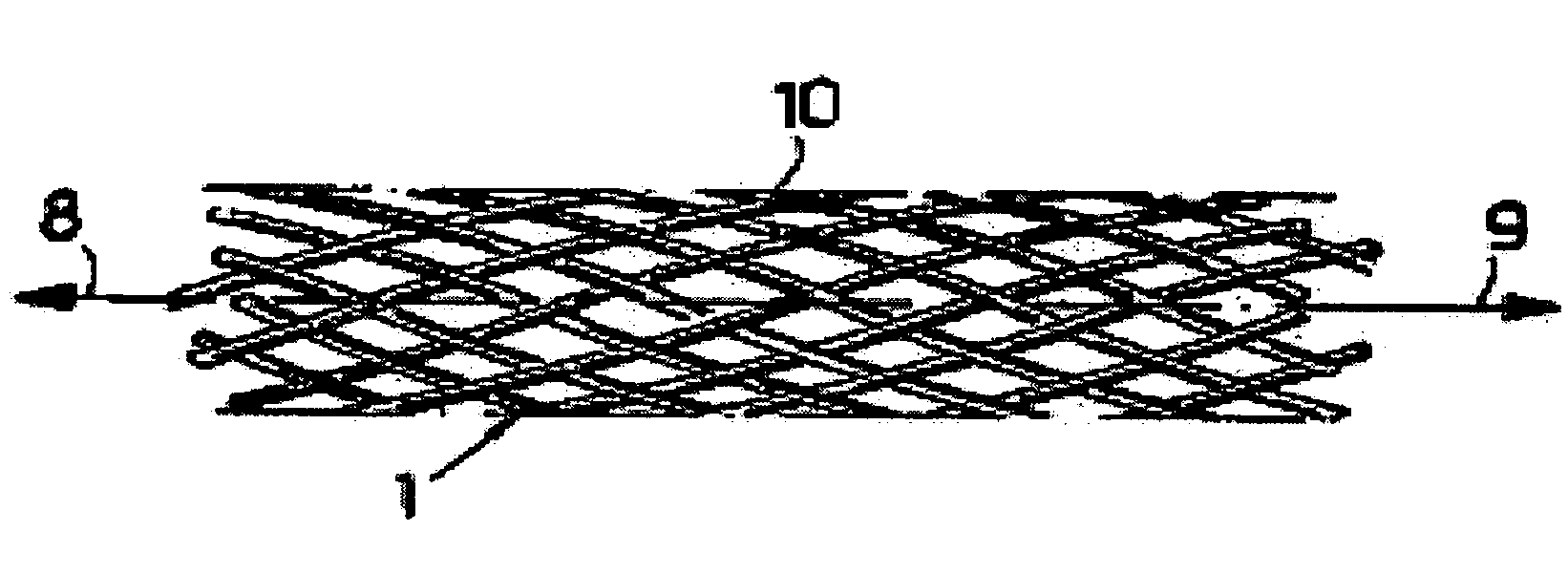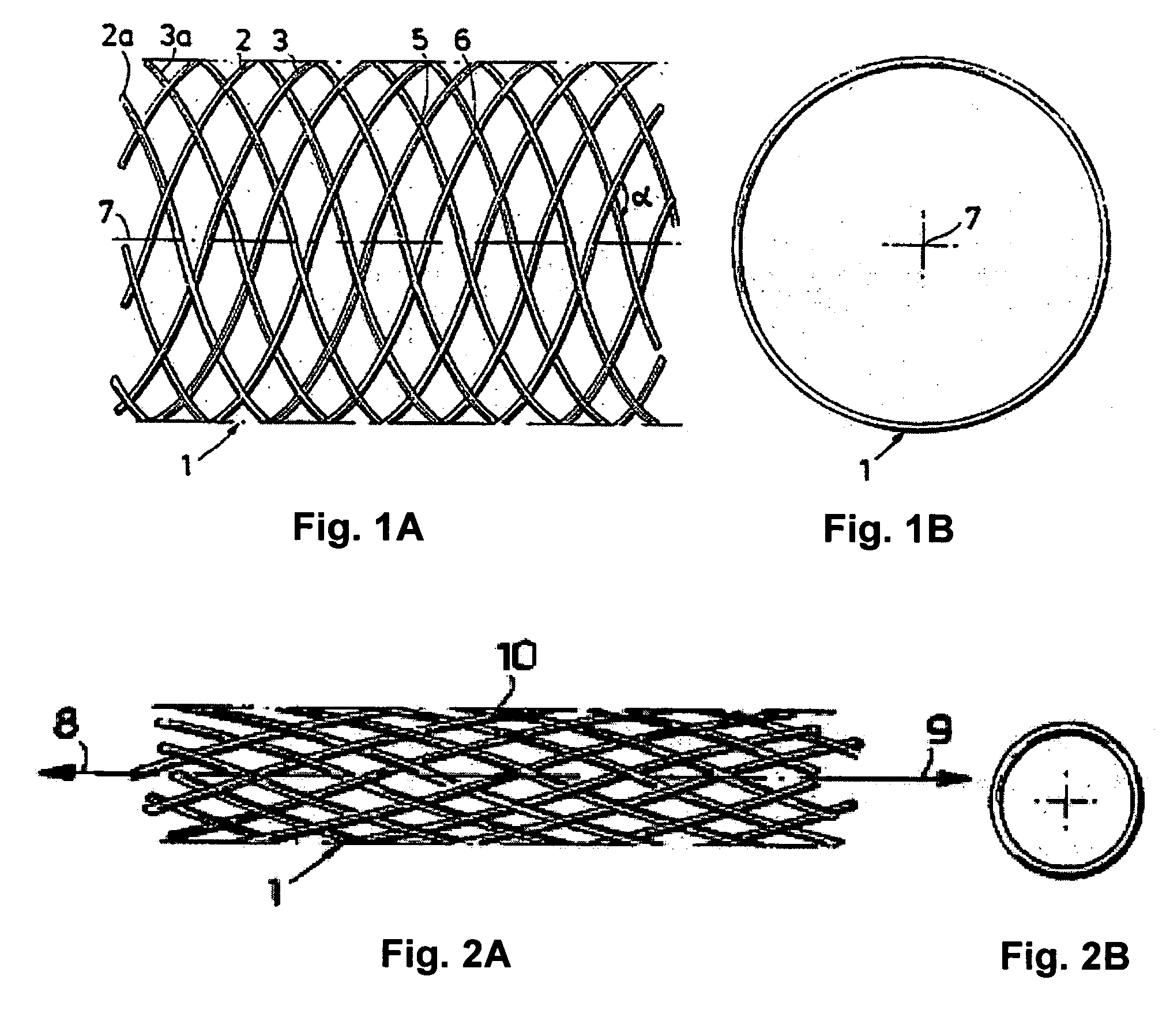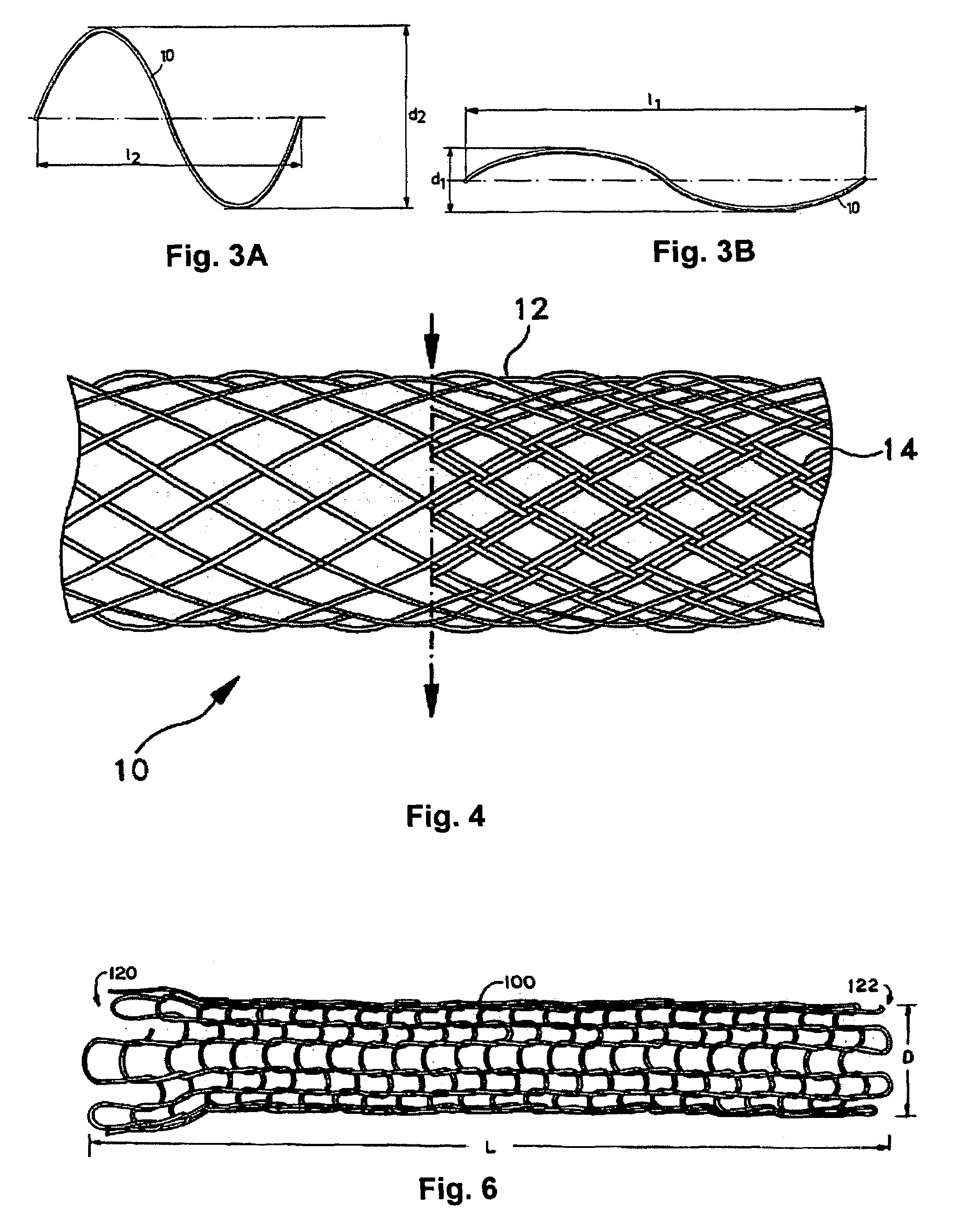Bioabsorbable stents with reinforced filaments
a technology of bioabsorbable stents and reinforced filaments, which is applied in the field of bioabsorbable stents with reinforced filaments, can solve the problems of mechanical strength and physical limitations of as-processed bioabsorbable materials, and achieve the effect of improving the material properties of stents
- Summary
- Abstract
- Description
- Claims
- Application Information
AI Technical Summary
Benefits of technology
Problems solved by technology
Method used
Image
Examples
Embodiment Construction
[0013]The present invention is directed to stents that are bioabsorbed by a patient upon implantation or insertion of the stent into the patient. The stents of the present invention are adapted for deployment at various placement sites within the patient, and include vascular stents (e.g., coronary vascular stents and peripheral vascular stents such as cerebral stents), urinary stents (e.g., urethral stents and ureteral stents), biliary stents, tracheal stents, gastrointestinal stents and esophageal stents.
[0014]The stents of the present invention contain one or more filaments (also referred to herein as “oriented filaments”), which in turn contain an oriented bioabsorbable polymeric material (also referred to herein as “oriented material”). The polymer molecules within the oriented bioabsorbable polymeric material have a helical orientation with an axis that is which is aligned with respect to (e.g., the axes of the helices are parallel to) the longitudinal axis of the filament. As...
PUM
| Property | Measurement | Unit |
|---|---|---|
| melting point | aaaaa | aaaaa |
| bioabsorbable | aaaaa | aaaaa |
| length | aaaaa | aaaaa |
Abstract
Description
Claims
Application Information
 Login to View More
Login to View More - R&D
- Intellectual Property
- Life Sciences
- Materials
- Tech Scout
- Unparalleled Data Quality
- Higher Quality Content
- 60% Fewer Hallucinations
Browse by: Latest US Patents, China's latest patents, Technical Efficacy Thesaurus, Application Domain, Technology Topic, Popular Technical Reports.
© 2025 PatSnap. All rights reserved.Legal|Privacy policy|Modern Slavery Act Transparency Statement|Sitemap|About US| Contact US: help@patsnap.com



